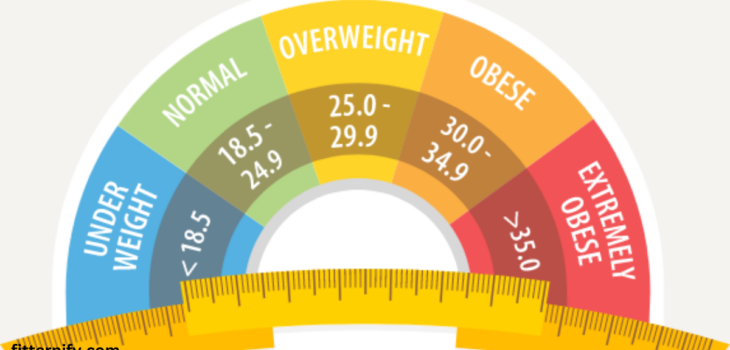 Health & Fitness
Health & Fitness
A Complete Guide to Using the BMI Calculator by Age for Better Health
- by fitternify.
Body Mass Index (BMI) is a commonly used method for evaluating whether an individual’s weight is within a healthy range in relation to their height. However, BMI does not consider factors such as age, gender, or body composition, which can have significant effects on a person’s health. That’s where the BMI calculator by age becomes invaluable. By factoring in age, this tool provides a more nuanced understanding of a person’s health and how weight can influence their well-being as they grow older.
This article will explore the BMI calculator by age, its significance, how it works, and how it can be used to monitor health at different life stages. We’ll also discuss its benefits and limitations, so you can understand how to use it effectively for maintaining a healthy lifestyle.
What is BMI and Why is Age Important?
BMI is a calculation used to assess an individual’s body weight relative to their height. It is determined by dividing a person’s weight (in kilograms) by the square of their height (in meters). The result of this calculation falls into categories such as underweight, normal weight, overweight, and obesity, helping healthcare providers assess potential risks for conditions like heart disease, diabetes, and more.
However, while BMI offers a quick and easy method to gauge health, it has its limitations. One major limitation is that it doesn’t account for age-related changes in the body. For example, as we age, our muscle mass typically decreases, and fat may accumulate in different areas. These shifts in body composition can influence how BMI relates to actual health status.
For children and teenagers, BMI standards are different from those used for adults. A BMI calculator by age addresses these differences, providing a more accurate assessment tailored to an individual’s stage of life.
How Does the BMI Calculator by Age Work?
The standard BMI formula applies to adults, but when assessing BMI in children, teenagers, and older adults, the calculator accounts for the unique physiological changes that occur as people age.
-
For Children and Teenagers: BMI is calculated using the same formula, but the results are compared to percentile charts that take age and gender into consideration. This is because children are still growing, and their body composition changes as they age. A child’s BMI is interpreted in percentiles, comparing their BMI to other children of the same age and gender.
- Underweight: Below the 5th percentile
- Normal weight: 5th to 85th percentile
- Overweight: 85th to 95th percentile
- Obesity: Above the 95th percentile
-
For Adults: In adults, BMI is generally calculated without considering age directly, though it is acknowledged that age influences factors like muscle mass, fat distribution, and metabolic rate. For instance, older adults may find it easier to gain weight and harder to lose it compared to younger individuals.
-
For Older Adults: As people age, BMI becomes less reliable in assessing health since muscle mass decreases and fat percentage increases. The BMI calculator for older adults may offer alternative measurements such as body fat percentage and waist circumference to give a more accurate picture of health.
The Importance of Using BMI by Age
Using BMI by age offers several key benefits. Age is a critical factor when evaluating body weight, and understanding how BMI interacts with different life stages can lead to more personalized health advice. Here are some key reasons why using a BMI calculator by age is important:
1. Better Health Assessment Across Life Stages
As we grow older, our bodies undergo several changes. From childhood to adolescence, and then into adulthood and old age, muscle mass and fat distribution shift. The BMI calculator by age accounts for these changes, offering a more accurate health assessment. For example, a 10-year-old and a 40-year-old cannot be compared directly using the same BMI scale, as their bodies are fundamentally different in terms of growth and composition.
2. Tracking Growth and Development in Children and Adolescents
For children and teenagers, monitoring BMI by age is critical for understanding whether they are growing appropriately. Pediatricians use BMI calculators to track growth patterns and identify potential health risks early. A child who falls outside the normal weight range might need further evaluation to rule out conditions such as undernutrition or obesity.
3. Adjusting for Age-Related Changes in Body Composition
For adults, especially older adults, BMI becomes less reliable due to muscle loss and an increase in fat, particularly around the abdominal area. The BMI calculator for older adults can help individuals better understand how their body composition changes with age. This helps them make informed decisions about weight management, physical activity, and dietary choices that support overall health.
4. Early Detection of Health Risks
Using BMI by age can also help in the early detection of health risks associated with abnormal body weight, such as diabetes, hypertension, and cardiovascular disease. For example, if an elderly person has a BMI that falls into the overweight or obese category, it may signal a higher risk for these conditions, prompting them to take action and make lifestyle changes.
Benefits and Limitations of the BMI Calculator by Age
Like any health tool, the BMI calculator by age has its advantages and drawbacks. It’s important to use the calculator with an understanding of these factors.
Benefits of the BMI Calculator by Age:
- Personalized Health Insights: By considering age in the calculation, the BMI calculator provides a more personalized approach to health monitoring.
- Easier Growth Tracking: For children and teenagers, BMI by age helps ensure they are growing within a healthy range and can help identify early health issues.
- Simple and Accessible: BMI is easy to calculate and doesn’t require expensive tests or equipment. It provides a quick snapshot of a person’s weight status.
- Widely Used by Healthcare Providers: The age-adjusted BMI calculator is a tool that is recognized and used by medical professionals for routine check-ups.
Limitations of the BMI Calculator by Age:
- Does Not Account for Muscle Mass: BMI doesn’t distinguish between fat and muscle, so it may misclassify muscular individuals as overweight or obese, particularly in younger or older adults.
- No Insight into Fat Distribution: BMI doesn’t tell you where fat is distributed on the body. For example, abdominal fat is more dangerous than fat stored in other areas, yet BMI cannot account for this difference.
- Potential for Misinterpretation in Older Adults: For older individuals, BMI may be misleading because it does not consider muscle mass loss, and those who are frail or sedentary may have a “normal” BMI despite unhealthy body composition.
How to Use BMI by Age Effectively
To make the most of the BMI calculator by age, here are some tips:
-
Use It as a Screening Tool: BMI is a useful starting point, but it should be combined with other health measurements, such as waist circumference, body fat percentage, and overall physical health, for a more accurate understanding of health.
-
Consult a Healthcare Professional: If you are unsure about the results or need help interpreting them, speak with a healthcare provider. They can provide additional insights and help create a health plan tailored to your age and lifestyle.
-
Track Changes Over Time: Regularly tracking your BMI at different stages of life can help you identify trends and make necessary adjustments to your diet and exercise routine.
Conclusion
The BMI calculator by age is a valuable tool for monitoring health across different stages of life. From childhood growth to adulthood and into old age, understanding how BMI changes with age helps individuals make better-informed health decisions. However, it’s important to remember that BMI is just one indicator of health, and it should be used in conjunction with other tools, such as body fat percentage measurements and waist circumference, to get a complete picture of well-being. By tracking BMI in relation to age, people can maintain healthier lifestyles and potentially avoid health risks associated with weight issues.









